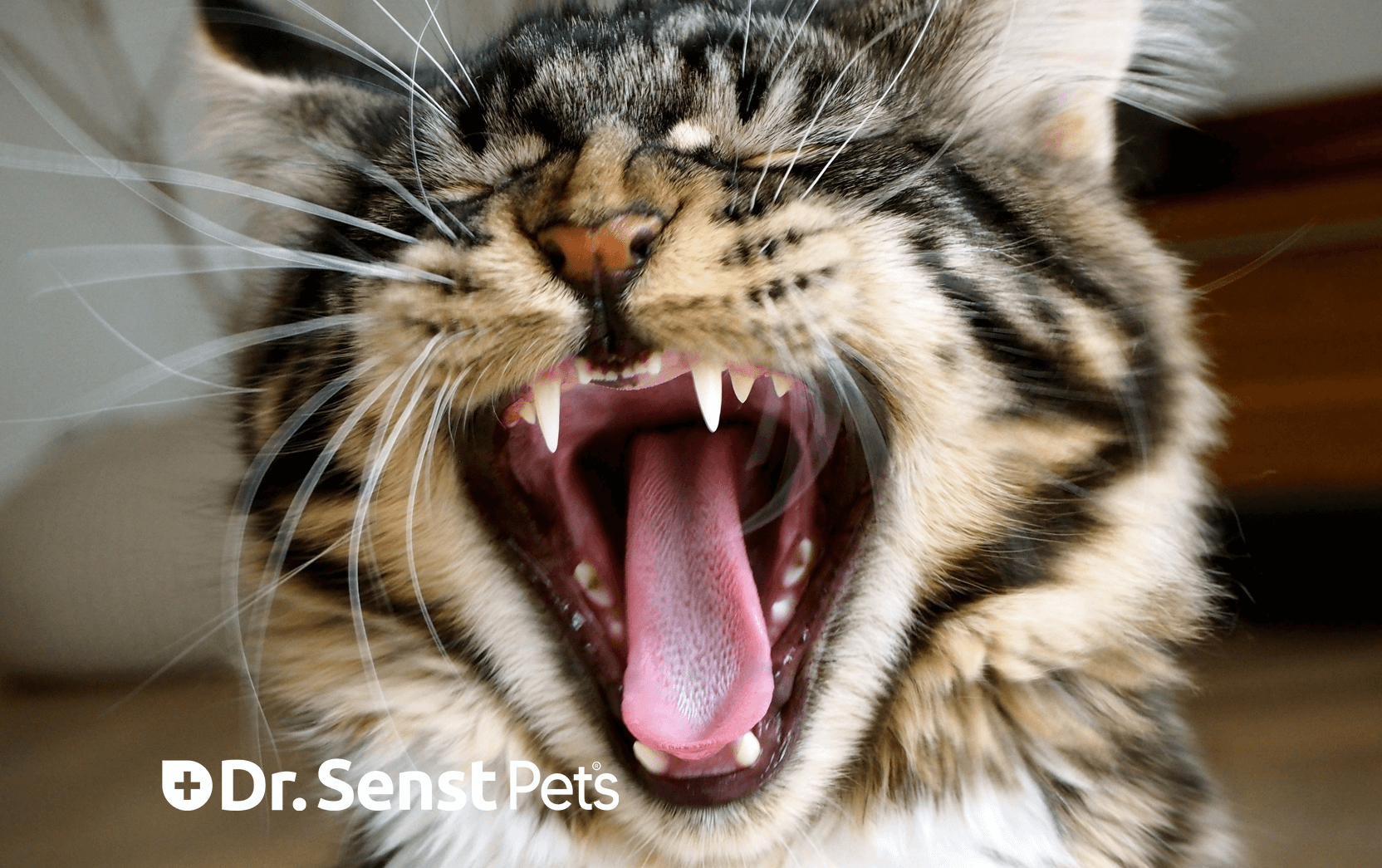
- by Dr.Thilo Senst
How to Spot a Tooth Abscess in Cats: Essential Cat Oral Care Tips
- by Dr.Thilo Senst
How to Spot a Tooth Abscess in Cats: A Comprehensive Guide to Cat Oral Care
A cat’s oral health is often overlooked, but it’s vital for their overall well-being. Just like humans, cats are susceptible to dental problems, and one of the most serious is a tooth abscess. Left untreated, it can lead to significant pain, infection, and other health issues.
Understanding the symptoms and knowing how to act quickly is key in providing the best cat oral care. This article will guide you through identifying, managing, and preventing tooth abscesses in your cat, ensuring that their teeth remain strong and healthy for years to come.
A tooth abscess occurs when a bacterial infection develops inside the root of the tooth. This infection creates a pocket of pus, leading to swelling, pain, and potential damage to the surrounding teeth and bones.
Common Causes of Tooth Abscess in Cats:
Left untreated, an abscess can spread, leading to systemic infections that can affect your cat’s kidneys, liver, and heart. This makes early detection and treatment critical in cat oral care.
Spotting the signs of a tooth abscess early is crucial in preventing further complications. Cats are often adept at hiding pain, so it’s important to monitor any subtle changes in behaviour.
Symptoms to Watch For:
Routine oral care can prevent the formation of abscesses by maintaining healthy teeth and gums. Cat oral care involves regular dental check-ups, cleanings, and at-home care such as brushing and providing dental treats.
Stat: A study in the UK found that over 70% of cats show signs of dental disease by the age of three【PDSA UK】. Regular cat oral care can drastically reduce the risk of infections and abscesses.
Analogy: Think of your cat’s teeth like a car engine—regular maintenance (cleaning and brushing) prevents costly repairs down the road (tooth abscesses and infections).
If you suspect your cat has a tooth abscess, it’s essential to seek veterinary care immediately. Your vet will perform a thorough examination, which may include:
Treatment Options:
Stat: According to UK veterinary data, dental disease is one of the top three reasons cats visit the vet, with tooth abscesses being a common diagnosis【source: British Veterinary Dental Society】.
Prevention is always better than cure. With proper cat oral care, you can reduce the chances of your feline developing a tooth abscess. Here are some preventive tips:
Brushing your cat’s teeth is the most effective way to prevent plaque build-up, which can lead to gum disease and abscesses. Use a soft-bristled brush and specially formulated cat toothpaste.
Some cat foods are specially formulated to support oral health. These foods help reduce plaque build-up, making them a great addition to your cat’s diet.
Regular veterinary check-ups ensure that any dental problems are caught early. Your vet can also perform professional dental cleanings to remove tartar and plaque that can lead to abscesses.
Once your cat has received treatment for a tooth abscess, they’ll need some home care to recover fully. Here’s what to do:
Ensure you follow any medication or aftercare instructions from your vet. This may include administering antibiotics or pain relief.
If your cat’s tooth has been extracted, or if they are still in pain, feeding a soft diet can make eating easier. Offer wet food or moistened kibble during recovery.
Watch for signs of the abscess returning, such as swelling or difficulty eating, and schedule regular dental check-ups to maintain oral health.
Maintaining good oral hygiene in cats does more than prevent abscesses. Here’s why cat oral care is critical to their overall health:
Q: How often should I brush my cat’s teeth?
A: Ideally, you should brush your cat’s teeth every day. If that’s not possible, aim for at least 3-4 times a week.
Q: What happens if a tooth abscess is left untreated?
A: If left untreated, the infection can spread, leading to more serious health issues like bone damage or systemic infections.
Q: Are certain cat breeds more prone to tooth abscesses?
A: Yes, breeds like Persians and Siamese cats, which are prone to dental issues, may be at a higher risk of developing tooth abscesses.
Proper cat oral care is essential to preventing tooth abscesses and maintaining your cat’s health. To keep your cat’s teeth and gums in the best condition, consider products from the Dr. Senst Pets range:
By prioritising your cat’s dental health, you can prevent painful abscesses and ensure a happier, healthier life for your feline friend.
![]()
Enter your details & download our comprehensive 50+ page printable Dr. Senst Pet Care Planner completley FREE! - keep track of all your pet’s needs, from medical history and training to vet visits, grooming, diet, and more!










Share:
Top Supplements for Cats with Itchy Skin: Allergy Relief Guide
Minimise Cat Allergies and Itching: Simple Home Adjustments